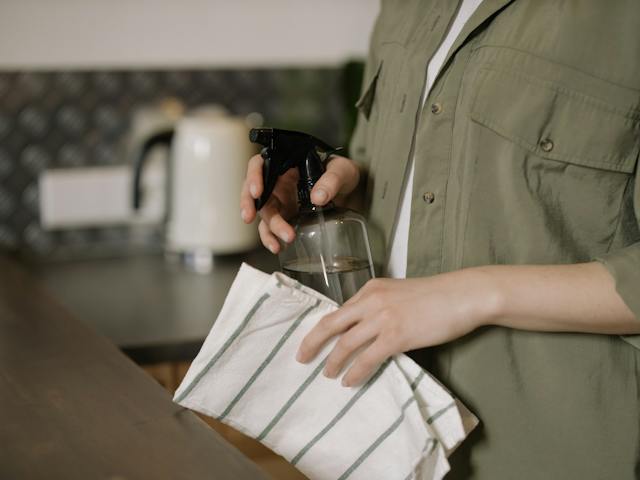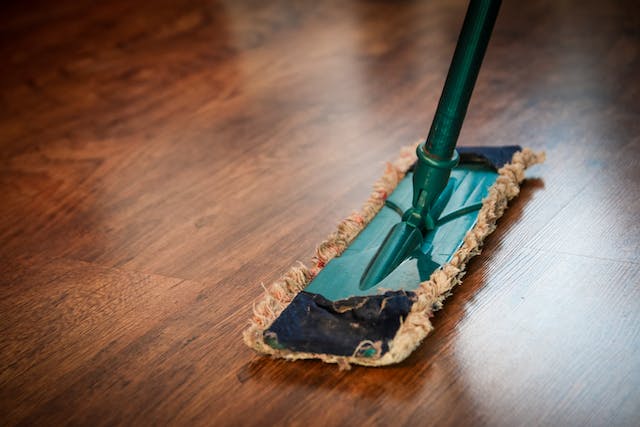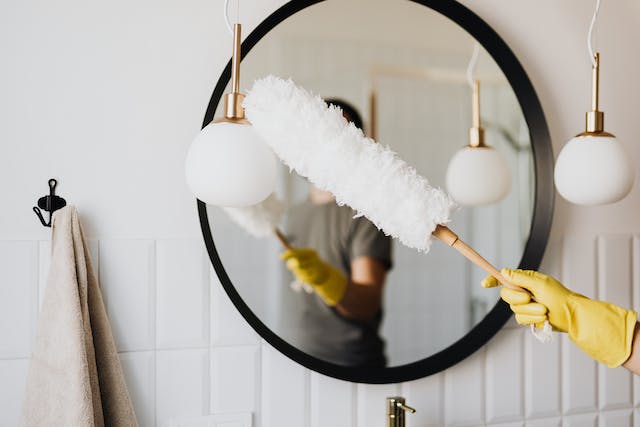End of Tenancy Cleaning
Following the end of a tenant's tenancy, the landlord has responsibilities. If there is no damage to the property other than normal wear and tear, landlords must restore the security deposit and verify that the tenant cleaned the property before leaving.
It's crucial to have a maintenance and repair clause in the rental agreement and an end-of-tenancy checklist because tenants and landlords may have differing standards of cleanliness. This may mitigate disputes and give the tenants guidance on what areas to concentrate on.
What Is the End of Tenancy Cleaning?
Tenant cleaning that needs to be done before leaving the property is known as end of tenancy cleaning. After accounting for typical wear and tear, most landlords demand that tenants return their rental properties in the same condition as when they found them.
Tenants are required by their agreement to perform a thorough cleaning of their rental property before they go. Every part of the property, including the walls, floors, carpets, appliances, and furniture, needs to be cleaned.
Why Is the End of Tenancy Cleaning Important?
Ensuring a smooth end-of-tenancy transition involves comprehensive cleaning efforts by tenants to restore the rental unit to its original condition. If, for instance, walls were repainted during the tenancy, they should be restored to their initial color.

Tenants are also responsible for repairing damages beyond normal wear and tear. The presentation of the property at the beginning of the lease should serve as a benchmark for its condition upon departure.
Failure to meet these expectations may result in the landlord withholding part of the security deposit to cover necessary repairs or cleaning expenses. Familiarity with Virginia's security deposit laws is crucial for both landlords and tenants to navigate these situations appropriately, and seeking legal advice can provide guidance in case of conflicts or disputes.
What is “Normal Wear and Tear”?
With increased usage, spaces inevitably experience wear and tear, affecting furnishings, appliances, and overall components. Common occurrences include stained carpets, faded wallpapers, dulled wall paints, and scratched furniture or floors.
Addressing such wear and tear is the landlord's responsibility, and they cannot deduct repair or replacement costs for these issues from the security deposit. Normal wear and tear is a natural outcome over time, and landlords must manage it without imposing financial responsibility on tenants through security deposit deductions.
What Is an Acceptable Level of Cleanliness?
Landlords and tenants often face disputes over differing neatness standards, highlighting the need for a clear reference point to prevent unfair expectations. Establishing this benchmark is crucial, ensuring that landlords don't demand that they clean more than the property's condition during the move-in inspection.

Documentation plays a pivotal role in this process. Both parties should extensively capture the property's state through photographs and videos during the initial inspection. This comprehensive documentation serves as a visual record for subsequent assessments.
The recorded evidence is particularly beneficial in identifying pre-existing damages. If any damages already exist, tenants shouldn't be held responsible for repair costs. The visual documentation helps tenants in effectively returning the unit to its original state during the end-of-tenancy cleaning process.
By presenting these visual records to cleaning professionals, tenants can enhance the likelihood of receiving the entire security deposit from the landlord. Overall, thorough documentation fosters transparency, minimizing conflicts and ensuring a fair resolution in rental agreements.
End of Tenancy Cleaning Checklist
As soon as your tenant lets you know they're moving out, you can provide them with an end-of-tenancy checklist. The end of tenancy checklist can also be used as you prepare your property for the next set of occupants. Verify that every part of your house is in excellent shape, including:
Walls, Doors, and Ceiling
- Perform any necessary paint touch-ups.
- Clean electrical sockets and switches.
- Remove ceiling cobwebs.
- Dust and sanitize window frames and sills.
- Clean walls and windows thoroughly.
- Sanitize door handles and surfaces.

Fixtures & Furnishings
- Clean shelves, wardrobes, and cupboards.
- Wipe down curtain rails and picture frames.
- Dust and polish sideboards, desks, and tables.
- Vacuum and clean the sofa and cushions.
Bathrooms
- Clean and shine the bathtub, faucets, and fixtures.
- Thoroughly clean the toilet.
- Eliminate any grout or mold from the tiles.
- Clean the shower doors and tray.
- Wipe down the shower rails or radiators.
Kitchens
- Clean the oven, ensuring degreasing.
- Clean the floors.
- Clean all appliances.
- Clean supplied cutlery.
- Clean the microwave.
- Clean every drawer and cupboard.
- Clean the kitchen sink.
Additional Areas To Consider
- Carpets: Often a point of contention, instruct the tenant to perform a comprehensive steam cleaning.
- Exterior: Emphasize the significance of [exterior upkeep]. Ensure the tenant maintains it well, including tasks like lawn mowing, weeding flower beds, and clearing any litter.
Bottom Line
Navigating the end of a tenant's lease agreement entails a host of responsibilities, including addressing normal wear and tear and resolving cleanliness disputes. Clear benchmarks are crucial, and documenting the property's condition through comprehensive inspections is vital for transparency.
At Redsail Property Management, we specialize in the complexities of property management, offering expert guidance and comprehensive services. From managing legal intricacies to ensuring seamless transitions between tenants, our dedicated team excels in optimizing property investments.
We understand the nuanced demands of the end-of-tenancy process and strive to provide unparalleled expertise. By entrusting Redsail Property Management, you ensure that your property is in reliable hands, allowing you to focus on the benefits of passive income without the stress of day-to-day management.
Contact Redsail Property Management today for a seamless and efficient property management experience.